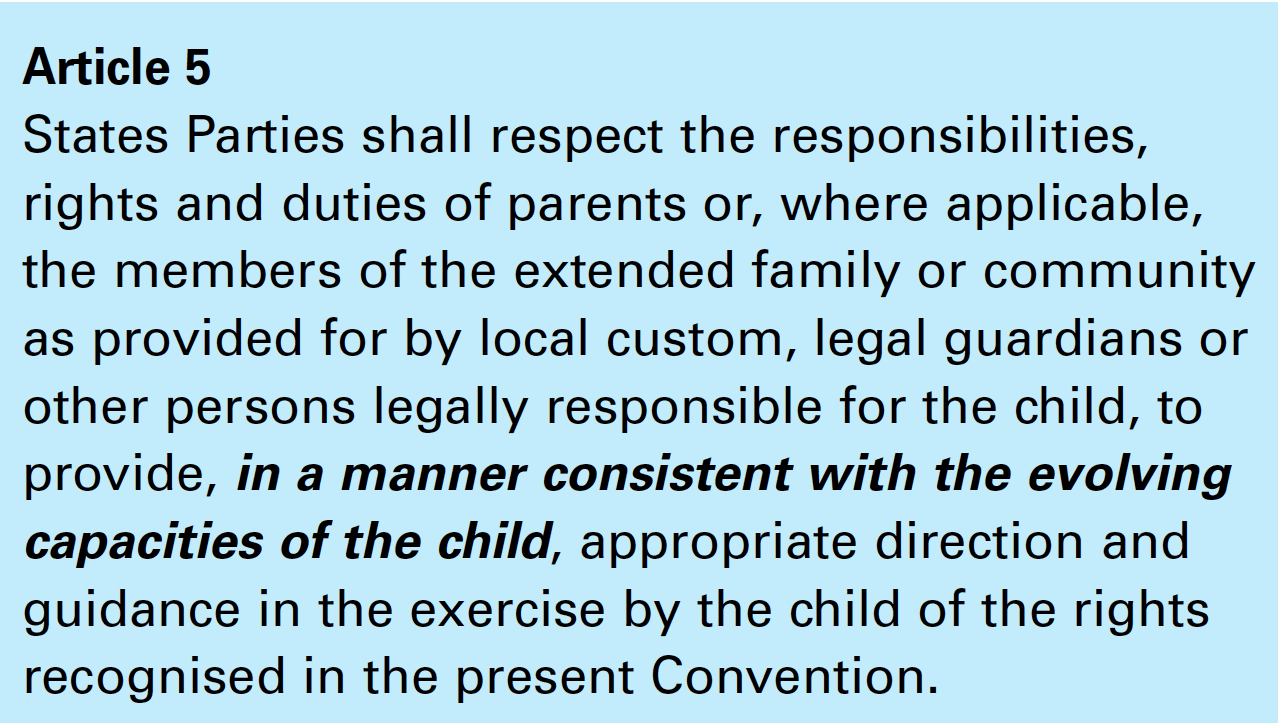
Image courtesy of UNICEF
Other countries take various approaches to regulating the provision of childhood and adolescent vaccines, and many afford significantly greater deference to adolescents’ decision-making capacity than the U.S. Many of these approaches recognize that imposing fixed age restrictions on adolescent capacity can be arbitrary, as biological age is only one determinant of development, particularly in adolescence. As a result, they are more closely aligned with the “evolving capacities of the child” standard, a well-established international human rights principle that recognizes that the capacities of older children and adolescents evolve towards independent decision-making as they mature.
These more flexible approaches can be divided into at least two categories:
Mature Minor or “Gillick Competence” Model: The mature minor standard or “Gillick Competence”, which is currently used in most of Canada, England and Australia, is a flexible standard that was developed by the British courts. This standard allows health professionals to assess the capacity of minors to consent to medical treatment by focusing on their maturity and judgement, instead of focusing exclusively on their biological age. Physicians can make a determination of capacity based on the minor’s individual maturity, development, and ability to understand and make decisions about the treatment in question. In Canada, this approach has been described as “a sliding scale of scrutiny“. The adolescent’s views become increasingly determinative depending on his or her ability to exercise mature, independent judgment, and the more serious the nature of the decision and the more severe its potential impact on life or health, the greater the degree of scrutiny required.
“Evolving Capacities” or Progressive Autonomy Model:Based in part on the Convention on the Rights of the Child‘s “evolving capacities” standard, this approach recognizes that children gradually develop and acquire the capacity necessary to make autonomous decisions about their health. In other words, as a minor’s decision-making capacity increases, the scope of parental involvement required decreases. Numerous countries have embraced this movement away from the capacity/incapacity binary, particularly in Latin America. Argentina, for example, uses a series of age brackets to determine the degree of a minor’s involvement in a given medical decision-making process. While children under the age of 12 have a right to be listened to and to participate in the decision-making process, they are legally incapable of making medical decisions. Between the ages of 13 and 16, adolescents are presumed to have the capacity to make autonomous medical decisions about routine or non-life threatening treatment. Once an adolescent is over 16, they can legally consent to all types of medical care.
The U.S. is not alone in imposing blanket age requirements for medical decision-making. However, among other countries that have adopted a similar approach, many have lower ages of consent for medical decision-making. Quebec‘s Civil Code, for example, sets the age of consent for most medical care at 14. In South Africa, children over 12 “who have the maturity to understand the implications of a proposed treatment” can consent to medical care.
As lawmakers in the U.S. grapple with the complicated medical, legal and ethical questions raised by bills that would allow adolescents to consent to vaccines without parental involvement, they should look to the experiences of other countries. They offer a number of promising paths forward.



